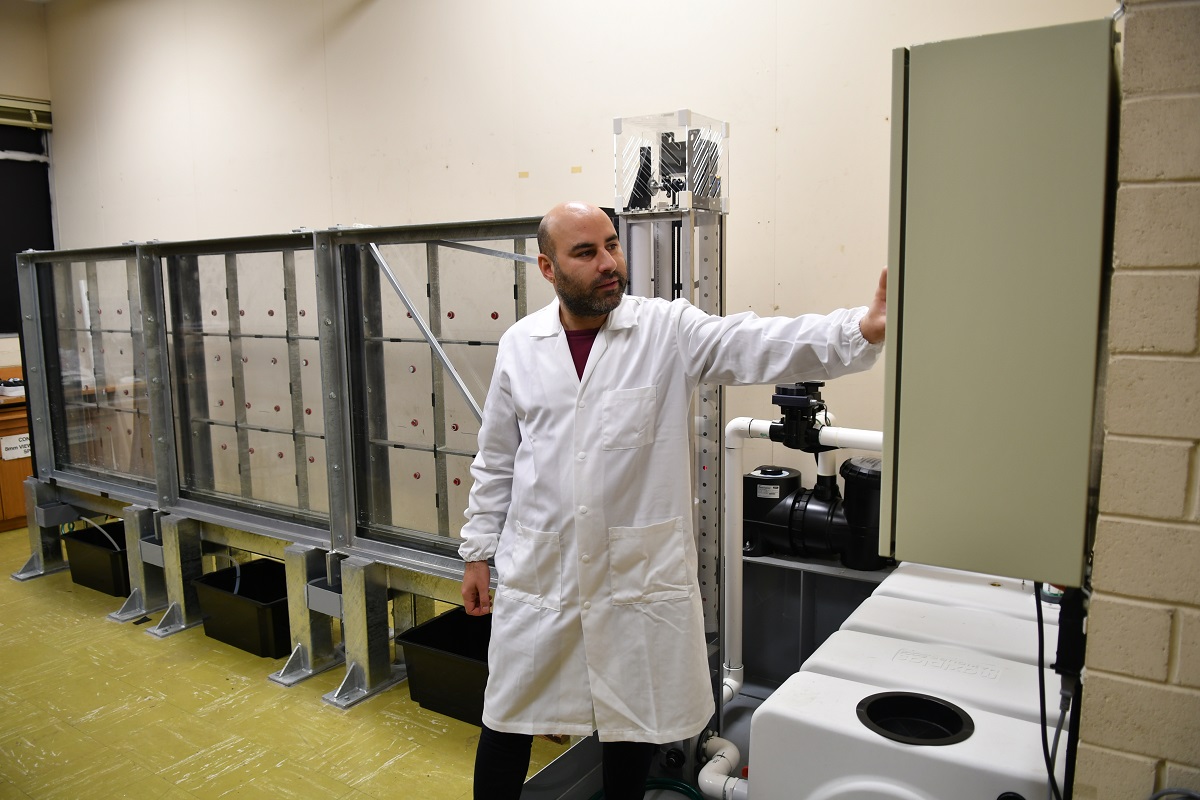
A new world-class sand tank facility will greatly assist the coastal hydrogeology research group of the College of Science and Engineering.
The large sand tank (measuring 3.6 m × 1.2 m × 0.065 m) was designed for experiments in two-dimensional cross-section and is equipped with a novel computerised mechanism for creating tides and waves at a shoreline. It is believed to be the first of its type in Australia.
Construction of the sand tank was made possible through an ARC Future Fellowship project, led by Professor Adrian Werner and built as part of Dr Amir Jazayeri’s postdoctoral research project.
“This state-of-the-art facility is expected to lead to new and significant observations and insights into coastal hydrogeology research in very complex settings,” says Dr Jazayeri.
The computerised fluctuating-head device can generate single and multiple constituent tides and even irregular waves to mimic oceanic forces acting on the coastal aquifers. It was designed and constructed by Flinders’ College of Science and Engineering workshop services, with thanks to Anthony Papageorgiou, Darren Fletcher, Chris Price, Craig Dawson and Craig Peacock and Damian Kleiss.
Because its components are corrosion resistant, the sand tank can be used for either saltwater or freshwater tests, allowing seawater intrusion research to be conducted under more complex and realistic conditions.
The sand tank is equipped with automated pressure and salinity sensors and a photography system to fully monitor coastal aquifer conditions, and is expected to be in operation during Semester 2.

